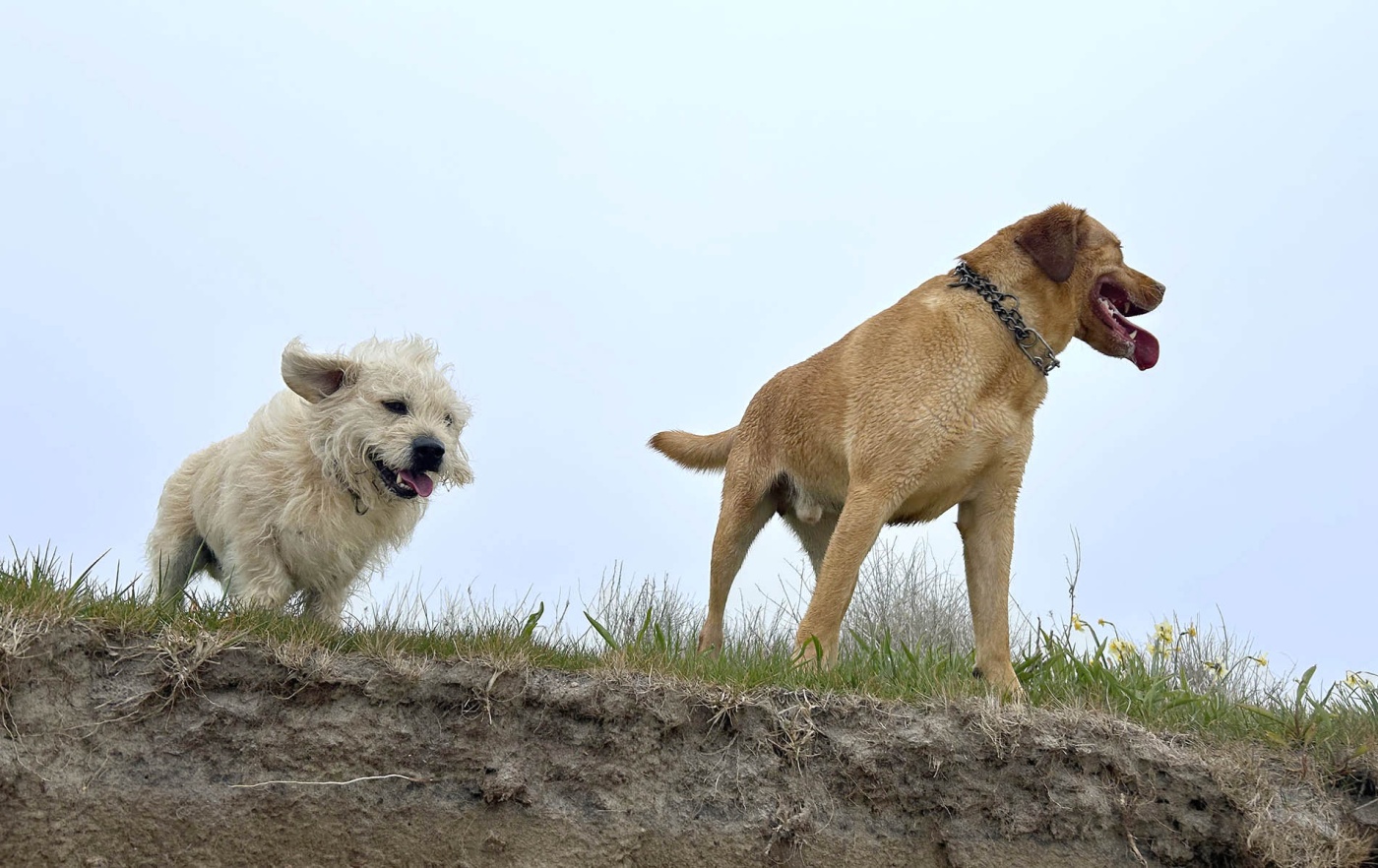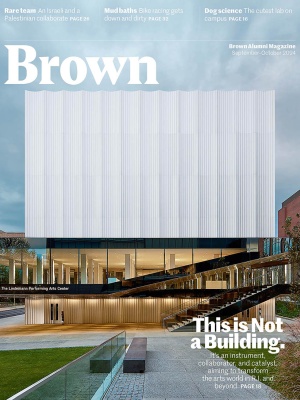Gone to the Dogs
A letter from the Editor
My dogs are a classic canine Odd Couple. Frank, rescued after living rough, is a Labby kind of yellow/brown, with gold eyes and an eagerness to please that’s made him a snap to train even though he was 90 pounds and 2 years old when we met him. Io is short with a wiry, dirty-white coat, and although we’ve had him since he was a puppy, he doesn’t listen to a word I say.

Dogs are the most varied species of mammal on earth, largely because of us. Thousands of years of intimate association with humans means some were bred to chase small animals into dens (Io, who has some serious Dachshund genes, is of this blanket-burrowing ilk), while others are perfectly suited to retrieving ducks from frigid lakes (Frank’s coat is too thick to see his skin, and he jumps into every body of water he can, even when he has to break ice). The variation isn’t just physical—any dog owner knows that whether or not their pet will embarrass them in a given situation owes as much to personality as to training efforts.
That variation is part of why canine research is growing. Dogs are susceptible to many of the same ills as humans—from Lyme to cancer to diabetes—and go home at night with their owners, eliminating the ethical and regulatory complexities of housing them in a lab. Human and canine genetics have much in common; Io’s stubby 6-inch legs are likely the result of the same family of genes that regulated my bone development. Finally, there’s a pawsitive plethora of research subjects: 65 million U.S. households include one. “We have a responsibility to deeply understand these animals if we’re going to live with them,” Monique Udell, who directs the human-animal interaction lab at Oregon State University, told the New York Times. “We have this great potential to learn a lot about them and a lot about ourselves in the process.”
There’s plenty else to learn about in this issue, including College Hill’s new jewel, the Lindemann Performing Arts Center—perhaps the most adaptable building in the world and one we hope you’ll check out when you’re next on campus. You’ll also meet a scientist who went pro in the demanding sport of cyclocross and two scholars—one Israeli, one Palestinian—who have been working and publishing together for years. Thanks, as always, for the lively selection of interesting letters, but please restrict yours to 150 words for the best chance of it running in full, in print.
Finally, I must share that BAM was awarded gold as the best alumni magazine in its class by the Council for the Advancement and Support of Education this June. We also won gold (again) for our continuing reporting on issues around race, as well as other wins for writing and photography. “A beautiful, refined magazine that didn’t shy away from telling substantive, compelling stories in fresh ways. A publication we could enjoy reading even without a connection to the university,” wrote the judges. Many thanks and congratulations to BAM’s wonderful staff and contributors.





